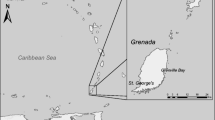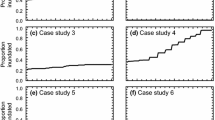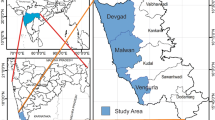Abstract
Coastal communities represent aggregates of wealth, economic activity, and population, but also of emerging physical hazards that can undermine their long-term vitality and prosperity. The 2012 Hurricane Sandy event is in many ways indicative of what may become a major issue in densely populated coastal centers whose unsustainable land use patterns often dictate their inherently low resilience to coastal hazards. Ideally, disaster-affected communities should recognize this window of opportunity to reverse said trends, establish realistic linkages between risks and response options, and engage in innovative adaptation. Despite increasing exposure to repetitive hazards and new risk information, many places still prefer to simply rebuild, maintain status quo, or support only conservative in situ adaptation and disaster risk reduction strategies. However, some circumstances call for more drastic and permanent solutions, such as relocation. This paper presents a novel integrated framework for the Relocation Potential Assessment of Coastal Communities designed to inform dilemma whether to rebuild or relocate from coastal areas devastated by a disaster. The main objective of this early effort is to propose metrics for the development of comprehensive assessment tool that will help identify areas of heightened social and physical vulnerabilities for which relocation may represent a more viable adaptation option. The proposed two-pronged approach promulgates the need for the integration of qualitative secondary data on socioeconomic profile, physical risks, and disaster exposure, with the bottom-up generated information on additional household-specific concerns that would improve accuracy and validity of considered stressors and therefore the usability of relocation potential assessment tool.




Similar content being viewed by others
References
Abel N, Gorddard R, Harman B, Leitch A, Langridge J, Ryan A, Heyenga S (2011) Sea level rise, coastal development and planned retreat: analytical framework, governance principles and an Australian case study. Environ Sci Policy 14(3):279–288. doi:10.1016/j.envsci.2010.12.002
Alaskan Department of Commerce (2007) Community and economic development: a brief history of the settlement of Newtok and Village Relocation Efforts. Newtok Planning Group
Alexander KS, Ryan A, Measham TG (2011) Managed retreat of coastal communities: understanding responses to projected sea level rise. Socio-Economics and Environment in Discussion, SCIRO Working Paper Series
American Community Survey (2011) 2011 Data release. http://www.census.gov/acs/www/data_documentation/2011_release/. Accessed 18 June 2014
Barnett J, Webber M (2010) Accommodating migration to promote adaptation to climate change. Commission on Climate Change and Development, A policy brief prepared for the Secretariat of the Swedish Commission on Climate Change and Development and the World Bank Report
Barnett J, Waters E, Pendergast S, Puleston A (2013) Barriers to adaptation to sea level rise: The legal, institutional and cultural barriers to adaptation to sea-level rise in Australia. National Climate Change Adaptation Research Facility, Gold Coast, p 85
Beever JW III, Gray W, Trescott D, Cobb D, Utley J, Hutchinson D, Gibbons J et al (2009) City of Punta Gorda Adaptation Plan. SWFRPC and CHNEP, Progress Report of the Interagency Climate Change Adaptation Task Force: Recommended Actions in Support of a National Climate Change Adaptation Strategy. Executive Office of the President of the United States
Black R, Kniveton D, Schmidt-Verkerk K (2011) Migration and Climate Change: towards an integrated assessment of sensitivity. Environment and Planning-Part A 43(2):431
Bogardi JJ, Renaud F (2006) Migration dynamics generated by environmental problems. In: 2nd international symposium on desertification and migrations, Almeria, pp 25–27
Bossel H (1999) Indicators for sustainable development: theory, method, applications : a report to the Balaton Group. International Institute for Sustainable Development, Winnipeg
Bourque LB, Regan R, Kelley MM, Wood MM, Kano M, Mileti DS (2013) An examination of the effect of perceived risk on preparedness behavior. Environment and Behavior 45:615–649. doi:10.1177/0013916512437596
Brody SD, Zahran S, Vedlitz A, Grover H (2008) Examining the relationship between physical vulnerability and public perceptions of global climate change in the United States. Environment and Behavior 40:72. doi:10.1177/0013916506298800
Brown O (2007) Climate change and forced migration: observations, projections and implications. Human Development Report, UNDP
Bukvic A, Owen G (2014) Should we stay or should we go: attitudes towards relocation post-Hurricane Sandy. Disasters (in press)
Blake ES, Kimberlain TB, Berg RJ, Cangialosi, JP, Beven JL II (2013) Tropical cyclone report: Hurricane Sandy (AL182012) 22–29 October 2012 National Hurricane Center
Carter TR, Mäkinen K (2011) Approaches to climate change impact, adaptation and vulnerability assessment: towards a classification framework to serve decision-making. MEDIATION Technical Report No. 2.1, Finnish Environment Institute (SYKE), Helsinki, Finland, p 70
Carter TR, Fronzek S, Mela H, O’Brien K, Rosentrater L, Simonsson L (2010) Climate change vulnerability mapping for the Nordic Region. Finnish Environment Institute, Helsinki 12 pp
Castles S, Miller MJ (1993) The age of migration: international population movements in the modern world. Macmillan, New York
Cole WD (2008) Sea level rise: Technical guidance for Dorchester County. Maryland Department of Natural Resources, Coastal Zone Management Division
Costanza R, Kubiszewski I, Roman J, Sutton P (2011) Migration and global environmental change. DR7a: changes in ecosystem services and migration in low-lying coastal areas over the next 50 years, Government Office for Science, Foresight, London, UK
Cronin V, Guthrie P (2011) Community-led resettlement: from a flood-affected slum to a new society in Pune. India. Environmental Hazards 10(3–4):310–326
Cruz AM, Okada N (2008) Methodology for preliminary assessment of Natech risk in urban areas. Nat Hazards 46:199–220. doi:10.1007/s11069-007-9207-1
CSI International, Inc (2008) Sea level rise response strategy: Worcester County. Department of Comprehensive Planning, Worchester County
Curry C (2013) NJ residents faring worse than neighbors in Hurricane Sandy recovery. ABC News. http://abcnews.go.com/US/jersey-residents-waiting-hurricane-sandy-rebuilding-money/story?id=20371933. Accessed 28 Oct 2013
Cutter SL, Boruff BJ, Hirley LW (2003) Social vulnerability to environmental hazards. Social Science Quarterly 84(2):242–261
de Sherbinin A, Warner K, Ehrhart C (2011) Casualties of climate change. Sci Am 304:64–71
Deyle RE, Bailey KC, Matheny A (2007) Adaptive Response Planning to Sea Level Rise in Florida and Implications for Comprehensive and Public-Facilities Planning. Department of Urban and Regional Planning, Florida State University, Florida Planning and Development Lab
Donahue A (2012) Disaster risk perception, preferences, and preparedness. University of Connecticut, Department of Public Policy, West Hartford, Connecticut. http://dpp.uconn.edu/PDFs/Risk-Perceptions-andPreparedness-Volume-3.pdf. Accessed 2 March 2015
FEMA, see: Federal Emergency Management Agency (2012) FEMA MOTF Hurricane Sandy impact analysis. http://www.arcgis.com/home/item.html?id=307dd522499d4a44a33d7296a5da5ea0. Accessed 16 Dec 2012
FEMA, see: Federal Emergency Management Agency (2015) Hazard Mitigation assistance—property acquisition (buyouts). https://www.fema.gov/application-development-process/hazard-mitigation-assistance-property-acquisition-buyouts. Accessed 18 Feb 2015
FoxBeach165 (2015) Fox Beach 165: Oakwood Beach buyout. http://foxbeach165.com/. Accessed 07 March 2015
Fritz C (2010) Climate change and migration: sorting through complex issues without the hype. Migration Information Source, Migration Policy Institute
Goldenberg S (2013) Alaska on the edge: Newtok’s residents race to stop village falling into the sea. Guardian
Groen JA, Polivka AE (2010) Going home after Hurricane Katrina: determinants of return migration and changes in affected areas. Demography 47(4):821–844
Harvey N, Clouston E, Carvalho P (1999) Improving coastal vulnerability assessment methodologies for integrated coastal zone management: an approach from South Australia. Aust Geogr Stud 37:50–69
Hinkel J (2011) Indicators of vulnerability and adaptive capacity: towards a clarification of the science–policy interface. Glob Environ Change 21:198–208
Ho M, Shaw D, Lin S, Chiu Y (2008) How do disaster characteristics influence risk perception? Risk Anal 28(3):635–643. doi:10.1111/j.1539-6924.2008.01040.x
Hoch CJ, Dalton LC, So FS (eds) (2000) The practice of local government planning, 3rd edn. International City/County Management Association (ICMA), Washington DC
Henry J. Kaiser Family Foundation (2008) New Orleans three years after the storm. The Second Kaiser Post-Katrina Survey, Executive Summary, Menlo Park, CA
Kaplan T (2013) Cuomo seeking home buyouts in flood zones. New York Times, February 3, 2013. http://www.nytimes.com/2013/02/04/nyregion/cuomo-seeking-home-buyouts-in-flood-zones.html?_r=0. Accessed 16 Oct 2014
Kienberger S, Lang S, Zeil P (2009) Spatial vulnerability units – expert-based spatial modeling of socio-economic vulnerability in the Salzach Catchment, Austria. Natural Hazards and Earth System Sciences 9:767–778
Krausmann E, Mushtaq F (2008) A qualitative natech damage scale for the impact of floods on selected industrial facilities. Nat Hazards 46:179–197
Laczko F, Aghazarm C (2009) Migration, environment and climate change: Assessing the evidence. International Organization for Migration, Geneva
Landry CE, Bin O, Hindsley P, Whitehead JC, Wilson K (2007) Going home: evacuation-migration decisions of Hurricane Katrina survivors. Working Paper 07-03, Department of Economics, Appalachian State University
Lausche JB (2009) Synopsis of an assessment: Policy tools for local adaptation to sea level rise. Marine Policy Institute at Mote Marine Laboratory, Technical Report #1419
Lonergan S (1998) The role of the environmental degradation in population displacement. Environmental Change and Security Project Report 41:5–15
Martin SF (2010) Climate change, migration and adaptation. Background papers of the study team on climate change and migration, German Marshall Fund, pp 1–8
Martinich J, Neumann J, Ludwig L, Jantarasami L (2013) Risks of sea level rise to disadvantaged communities in the United States. Mitig Adapt Strat Glob Change 18:169–185. doi:10.1007/s11027-011-9356-0
Tegart McGWJ, Sheldon GW (eds) (1992) Climate change 1992: the supplementary report to the IPCC impacts assessment. Australian Government Publishing Service, Canberra, Australia, Intergovernmental Panel on Climate Change
McLeman R, Smit B (2006) Migration as an adaptation to climate change. Clim Change 76:31–53
Messner F, Meyer V (2005) Flood damage, vulnerability and risk perception—challenges for flood damage research. UFZ Discussion Papers, Department of Economics, 13/2005
Moser SC, Williams SJ, Boesch DF (2012) Wicked challenges at land’s end: managing coastal vulnerability under climate change. Annu Rev Environ Resour 37:51–78
N.C. Finance Housing Efforts (n.d.) Community Partners Loan Pool. http://www.nchfa.com/Nonprofits/HPcommunitypartnersloan.aspx. Accessed 12 March 2015
National Park Service (2015) Moving the Cape Hatteras Lighthouse. http://www.nps.gov/caha/learn/historyculture/movingthelighthouse.htm. Accessed 04 March 2015
NCA, see: National Climate Assessment (2014) http://nca2014.globalchange.gov/report/regions/coasts. Accessed 05 March 2015
NCADAC, see: National Climate Assessment and Development Advisory Committee (2013) Federal Advisory Committee draft climate assessment draft report. http://ncadac.globalchange.gov/. Accessed 23 May 2013
NIH, see: National Institute of Health (2013) TOXMAP: environmental health maps. http://toxmap-classic.nlm.nih.gov/toxmap/main/index.jsp. Accessed 14 March 2013
NOAA, see: National Oceanic and Atmospheric Administration (2012) Incorporating sea level change scenarios at the local level. Report prepared by NOAA Coastal Services Center. http://www.ngs.noaa.gov/PUBS_LIB/SLCScenariosLL.pdf. Accessed 06 March 2014
NYS 2100 Commission (2013) Recommendations to improve the strength and resilience of the Empire State’s infrastructure. The Commission’s recommendations to Governor Andrew Cuomo
OECD: Organization for Economic Co-operation and Development (2009) Policy guidance on integrating climate change adaptation into development co-operation. Organization for Economic Co-operation and Development, Paris, France
Picou JC (2009) Katrina as a natech disaster: toxic contamination and long-term risks for residents of New Orleans. Journal of Applied Social Science 3(2):39–55
Piguet E, Pécoud A, de Guchteneire P (eds) (2011) Migration and climate change. Cambridge University Press, Cambridge, UK
Polefka S (2013) Moving out of harm’s way. Center for American Progress, December 12, 2013. https://www.americanprogress.org/issues/green/report/2013/12/12/81046/moving-out-of-harms-way/. Accessed 02 March 2015
Riad JK, Norris FH, Ruback RB (1999) Predicting evacuation of two-major disasters: risk perception, social influence, and access to resources. J Appl Soc Psychol 29(5):918–934
Smit B, Wandel J (2006) Adaptation, adaptive capacity and vulnerability. Global Environ Chang 16:282–292
Spanger-Siegfried E, Fitzpatrick M, Dahl K. (2014) Encroaching tides: How sea level rise and tidal flooding threaten U.S. east and gulf coast communities over the next 30 years. Union of Concerned Scientists, Cambridge
Stanton EA, Ackerman F (2007) Florida and climate change: the costs of inaction. Tufts University, Global Development and Environment Institute and the Stockholm Environment Institute–US Center
Steinberg LJ, Sengul H, Cruz AM (2008) Natech risk and management: an assessment of the state of the art. Nat Hazards 46:143–152
Sweet WV, Park J (2014) From the extreme to the mean: acceleration and tipping points of coastal inundation from sea level rise. Earth’s Future 2(12):579–600
Tegart, McG WJ, Sheldon GW, Griffiths DC (1990) Climate change: the IPCC impacts assessment, report prepared for IPCC by Working Group II. Australian Government Publishing Service, Canberra
Titus JG, Anderson KE, Cahoon DR, Gesch DB, Gill SK, Gutierrez BT, Thieler ER, Williams SJ (2009) Coastal sensitivity to sea-level rise: a focus on the mid-Atlantic region. U.S. climate change science program: synthesis and assessment product 4.1, 2009
UO and USADA, see: University of Oregon and USDA Forest Service (2011) Climate change: realities of relocation for Alaska Native Villages. Tribal climate change profile: relocation of Alaska Native Communities, University of Oregon Environmental Studies Program and USDA Forest Service Pacific Northwest Research Station
U.S. Census Bureau/data (2010) United States Census 2010. http://www.census.gov/2010census/. Accessed 10 June 2014
Van Voorhis S (2014) Boston’s rising tide isn’t dampening development. http://www.boston.com/real-estate/news/2014/10/04/boston-rising-tide-isn-damping-development/NA9BoaMvmb1kG8EetEWloN/story.html. Accessed 03 March 2015
Warner K (2010) Assessing Institutional and Governance Needs Related to Environmental Change and Human Migration. The German Marshall Fund of the United States, Study Team on Climate Induced Migration, June 2010
White House (2012) The Hurricane Sandy funding needs. In a letter from the Executive Office of the Presidents, Office of Management and Budget, to members of the House of Representatives
Wong PP, Losada IJ, Gattuso JP, Hinkel J, Khattabi A, McInnes KL, Saito Y, Sallenger A (lead authors) (2014) Coastal systems and low-lying areas. In: Climate change 2014: impacts, adaptation, and vulnerability. Part A: global and sectorial aspects. Contribution of Working Group II to the Fifth Assessment Report of the Intergovernmental Panel on Climate Change. Cambridge University Press, Cambridge, UK and New York, NY, USA, pp 361–409
Zillow (2014) What is waterfront worth? http://www.zillow.com/research/what-is-waterfront-worth-7540/. Accessed 03 March 2015
Acknowledgments
The author is very thankful to Erin Puckett for her dedication to this project and more specifically, development of GIS maps and data management.
Author information
Authors and Affiliations
Corresponding author
Rights and permissions
About this article
Cite this article
Bukvic, A. Integrated framework for the Relocation Potential Assessment of Coastal Communities (RPACC): application to Hurricane Sandy-affected areas. Environ Syst Decis 35, 264–278 (2015). https://doi.org/10.1007/s10669-015-9546-5
Published:
Issue Date:
DOI: https://doi.org/10.1007/s10669-015-9546-5




